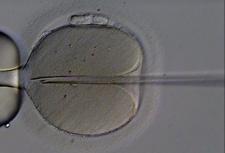Aggregated News

This summer Louise Brown, the world’s first “test tube” baby, celebrated her 38th birthday as a mother of two naturally conceived children. In the decades since Ms. Brown’s celebrated birth, the techniques of in vitro fertilization, or I.V.F., have improved tremendously, resulting in an estimated five million babies worldwide born to couples unable to conceive on their own.
The many happy stories about couples whose families were enhanced by I.V.F. tend to overshadow the many more failures rarely talked about, creating the impression that the procedure is far more effective than it really is.
At the same time, the techniques usually used have led to a rash of multiple births — more than 40 percent of all I.V.F. deliveries in the United States are of twins or higher — because doctors commonly transfer two or more embryos in hopes of achieving a successful pregnancy.
As Dr. Allan Templeton of the University of Aberdeen and Aberdeen Maternity Hospital in Scotland reported, “in the United States, between 1980 and 2001, a fourfold increase in triplets and high-order births was documented...



